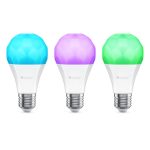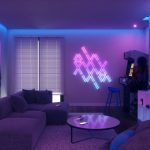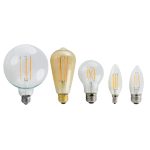LED Light Strips Not Working? Here’s Why and How to Fix Them!
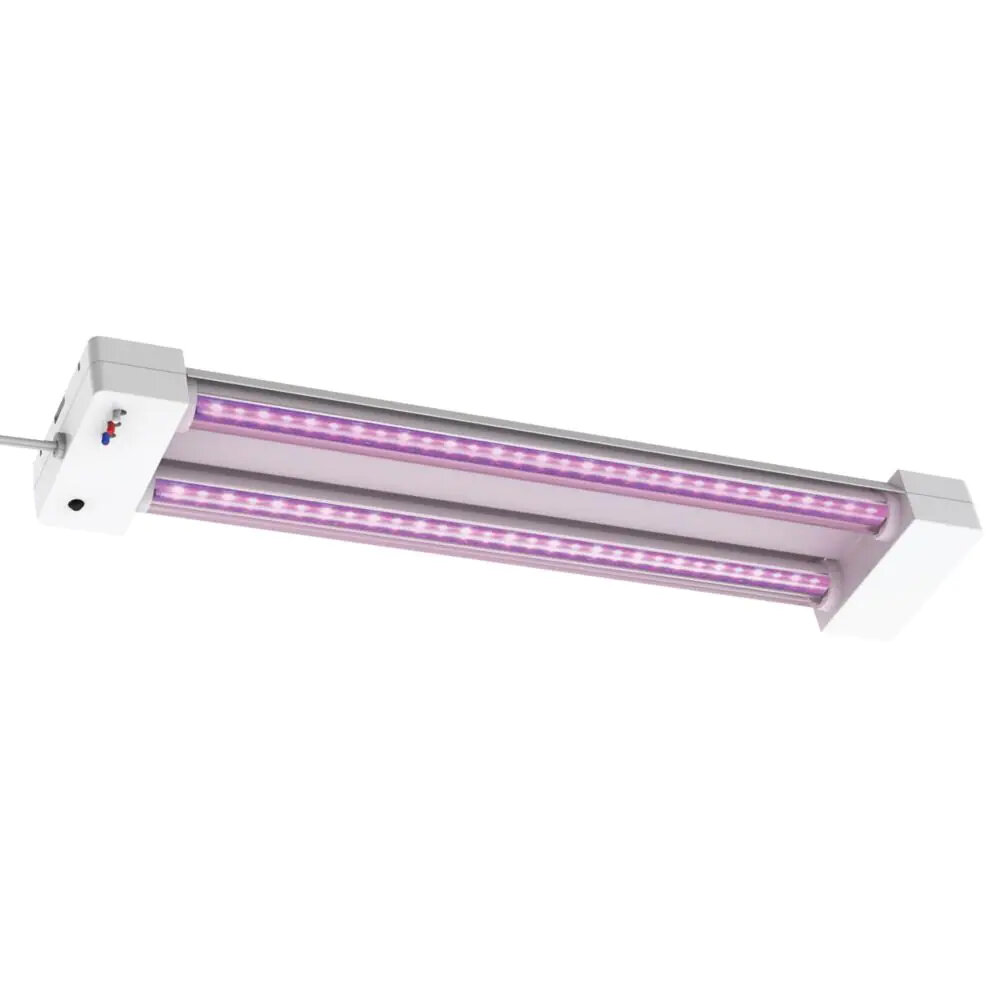
LED light strips are an innovative and energy-efficient way to brighten up any space, whether it’s a room in your home or a commercial building. However, like any other electrical device, these light strips can have issues that prevent them from working properly. If you’ve noticed that your LED light strips are not working, don’t worry! There are several reasons why this could be happening, and many of them can be easily fixed with a little troubleshooting. One common issue with LED light strips is that they may not turn on at all, or they may turn on briefly before shutting off again. This can be caused by a loose connection between the light strip and the power source, or it could be a problem with the power source itself. Another issue that can cause LED light strips to malfunction is a damaged or faulty power cord. If the cord is damaged or frayed, it may not be providing enough power to the light strips, which can cause them to flicker or turn off entirely. In this article, we’ll explore some of the most common reasons why LED light strips may not be working, and we’ll provide you with some tips and tricks for fixing them so you can enjoy bright, beautiful lighting once again.
LED light strips are versatile lighting solutions that consist of a series of tiny LED bulbs arranged on a flexible circuit board, enclosed in a protective layer. They are commonly used for home decoration, accent lighting, and task lighting purposes. LED light strips come in various colors, sizes, and shapes, and can be cut to fit any surface or shape. They are energy-efficient, long-lasting, and emit low heat, making them a popular choice for interior and exterior lighting. However, LED light strips can sometimes malfunction due to several reasons, such as poor connections, faulty power supply, or incorrect installation. It is essential to identify the problem and fix it promptly to avoid further damage and ensure optimal performance.
Common Reasons for LED Light Strips Not Working
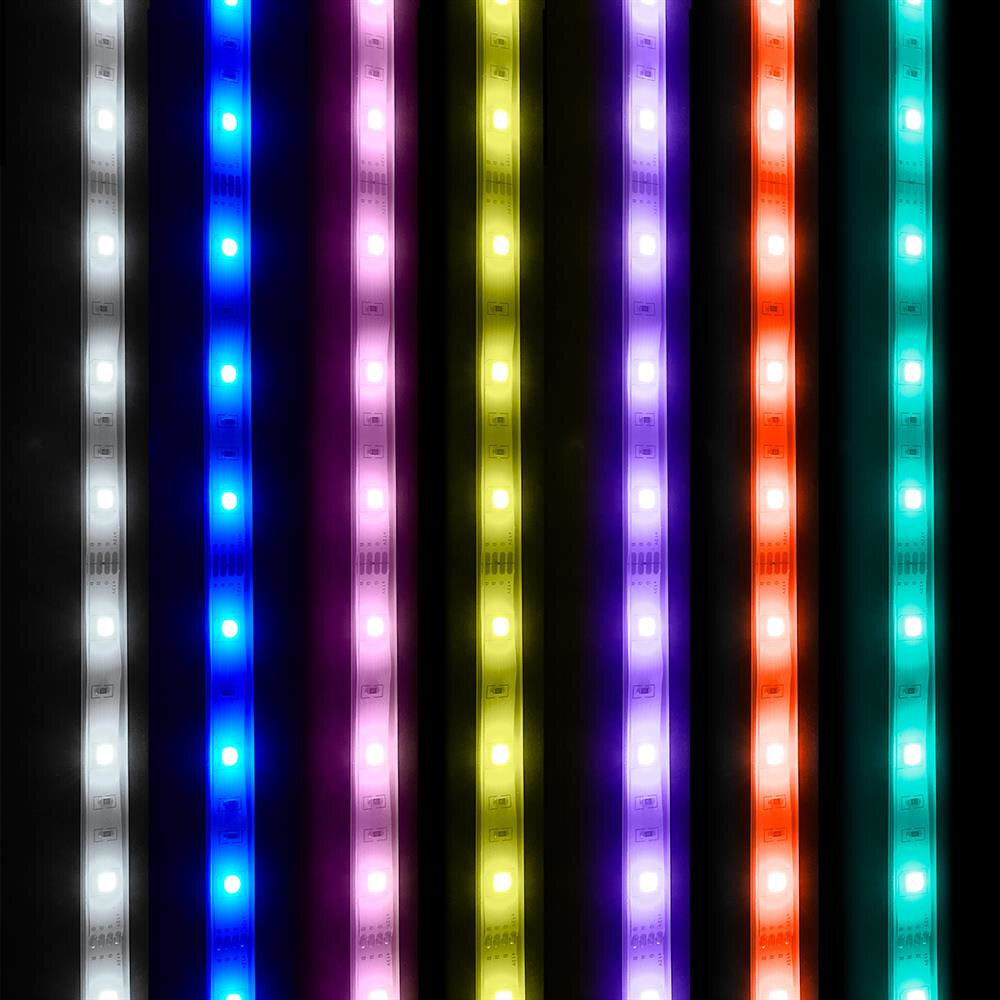
LED light strips have gained immense popularity in recent years due to their energy efficiency, flexibility, and ease of installation. These light strips are used to add a decorative touch to homes, offices, and automobiles. However, sometimes these LED light strips may not work as they should, leaving you in the dark. There can be several reasons for LED light strips not working, and identifying the root cause is crucial to fix the problem. One of the most common reasons for LED light strips not working is a faulty power source or adapter. This can be due to a loose connection or a damaged wire. If the power source is not providing enough voltage or current, the LED light strips may not light up properly. Another reason could be a defective LED driver, which regulates the power supply to the LED light strips. A faulty LED driver can cause flickering or dimming of the lights. In such cases, replacing the power source or adapter and LED driver can help to fix the problem.
Loose connections are one of the most common reasons why LED light strips may not be working. A loose connection can occur when the wires or connectors are not properly secured or when the adhesive on the strip has worn out. This can lead to intermittent flickering, partial illumination, or a complete lack of functionality. It is important to check all connections and make sure they are tight and secure. If the adhesive is worn out, the strip can be repositioned using new adhesive or clips. Properly securing all connections will ensure a consistent and reliable source of light from the LED strip.
One of the most common reasons why LED light strips may stop working is a damaged power supply. This component is responsible for regulating the voltage and current that flows to the LED strip, and without it, the strip won’t light up. If you suspect that the power supply is damaged, you can check it by using a multimeter to measure the output voltage. If the voltage is significantly lower than the rated voltage, then the power supply may need to be replaced. It’s important to choose a power supply that is compatible with your LED strip’s voltage and wattage requirements to ensure that it functions properly.
One of the common reasons why LED light strips may not be working is due to incorrect voltage. LED light strips require a specific voltage range to function properly, and if the voltage is too high or too low, the strips may not turn on or may flicker. This can happen if the power supply being used is not compatible with the LED light strips or if the voltage settings on the power supply are not adjusted correctly. It is important to check the voltage requirements of the LED light strips and ensure that the power supply being used meets those requirements. Additionally, it is essential to use a reliable power supply that can provide a steady and consistent voltage output to avoid any damage to the LED light strips.
Defective LED components could be one of the reasons why your LED light strip is not working. These components include the LED chips, resistors, capacitors, and solder joints. LED chips may have been damaged during installation or have a manufacturing defect. Resistors and capacitors play a crucial role in regulating the current and voltage of the LEDs, and any damage to them can lead to an LED light strip malfunction. Solder joints can also become loose or disconnect, causing the LED strip to stop working. It is important to inspect these components carefully and replace any that are not functioning properly to ensure your LED light strip works correctly.
How to Fix LED Light Strips
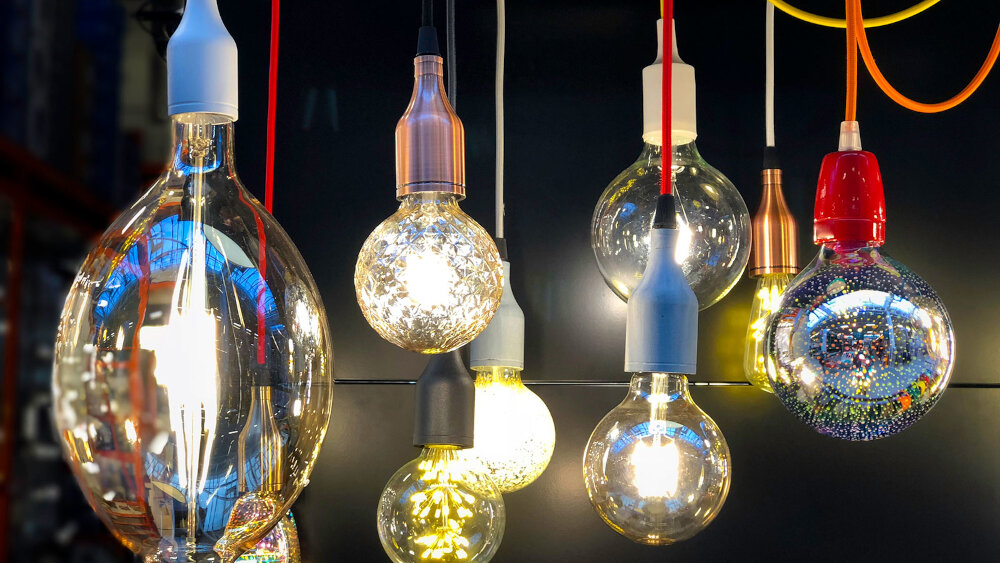
LED light strips are becoming increasingly popular in modern homes, but they can sometimes stop working for various reasons. If you experience issues with your LED light strips, the first step is to identify the problem. If the lights aren’t turning on, ensure that the power source is working correctly. Check the outlet, the power adapter, and the connection between the two. If the power source is working, the issue could be with the LED light strip itself. Check for any signs of damage, such as frayed wires or broken components. If you find any damage, the strip may need to be replaced. If there is no visible damage, the problem could be with the LED driver, which is responsible for regulating the power supply to the lights. If the LED light strip is flickering or has a dim glow, the issue could be with the power supply. Ensure that the voltage and wattage of the power supply match the requirements of the LED light strip. If the power supply is sufficient, check the wiring between the power source and the light strip. Loose connections or damaged wiring can cause flickering or a dim glow. If you find any issues, try repositioning or replacing the wiring. In some cases, the problem could be with the LED driver, which may need to be replaced. By following these troubleshooting steps, you can quickly identify and fix any issues with your LED light strips, ensuring that your home remains well-lit and stylish.
If you’re facing issues with your LED light strips not working, one of the most common culprits could be loose connections. Loose connections can lead to a range of issues, including flickering, dimming, or even complete failure. To tighten loose connections, start by unplugging your LED light strips and checking each connection point. Make sure that all wires are securely connected and that there are no signs of wear or damage. If you notice any loose or damaged connections, gently tighten them using a pair of pliers or a screwdriver. It’s also a good idea to use electrical tape or wire nuts to secure the connections and prevent any future issues. By taking the time to tighten loose connections, you can ensure that your LED light strips will work properly and provide the bright, beautiful lighting you desire.
If you’re experiencing issues with your LED light strips not working, it could be due to a damaged power supply. The power supply is responsible for converting AC voltage to DC voltage, which is necessary for the LED lights to function properly. A damaged power supply can prevent the correct amount of voltage from reaching the LED lights, resulting in poor performance or complete failure. If you suspect that the power supply is the culprit, it’s important to replace it as soon as possible to avoid any further damage to your LED light strips. A new power supply can be easily installed by following the manufacturer’s instructions and can quickly restore your LED light’s brightness and performance.
One of the most common reasons why LED light strips may not be working is due to voltage issues. It is important to check the voltage of the power source and ensure that it matches the voltage requirements of the LED light strip. If the voltage is too low, the LED lights may not turn on or may not be as bright as they should be. On the other hand, if the voltage is too high, it can cause damage to the LED light strip. In such cases, it is necessary to adjust the voltage of the power source to ensure that it matches the voltage requirements of the LED light strip. This can be done by using a voltage regulator or by choosing a power supply with the correct voltage output. Checking and adjusting the voltage can often solve issues with LED light strips not working properly.
One of the main reasons why LED light strips may not be working is due to defective LED components. These components can fail for a variety of reasons, such as overvoltage, overheating, or physical damage. To fix this issue, the defective LED components will need to be replaced. This task can be challenging, as it requires identifying the defective LED and removing it from the circuit board. However, with the right tools and expertise, it is possible to replace the defective LED and restore the functionality of the LED light strip. It is important to note that if the LED light strip is still under warranty, it may be best to contact the manufacturer for a replacement rather than attempting to fix it yourself.
Tips for Preventing LED Light Strip Issues
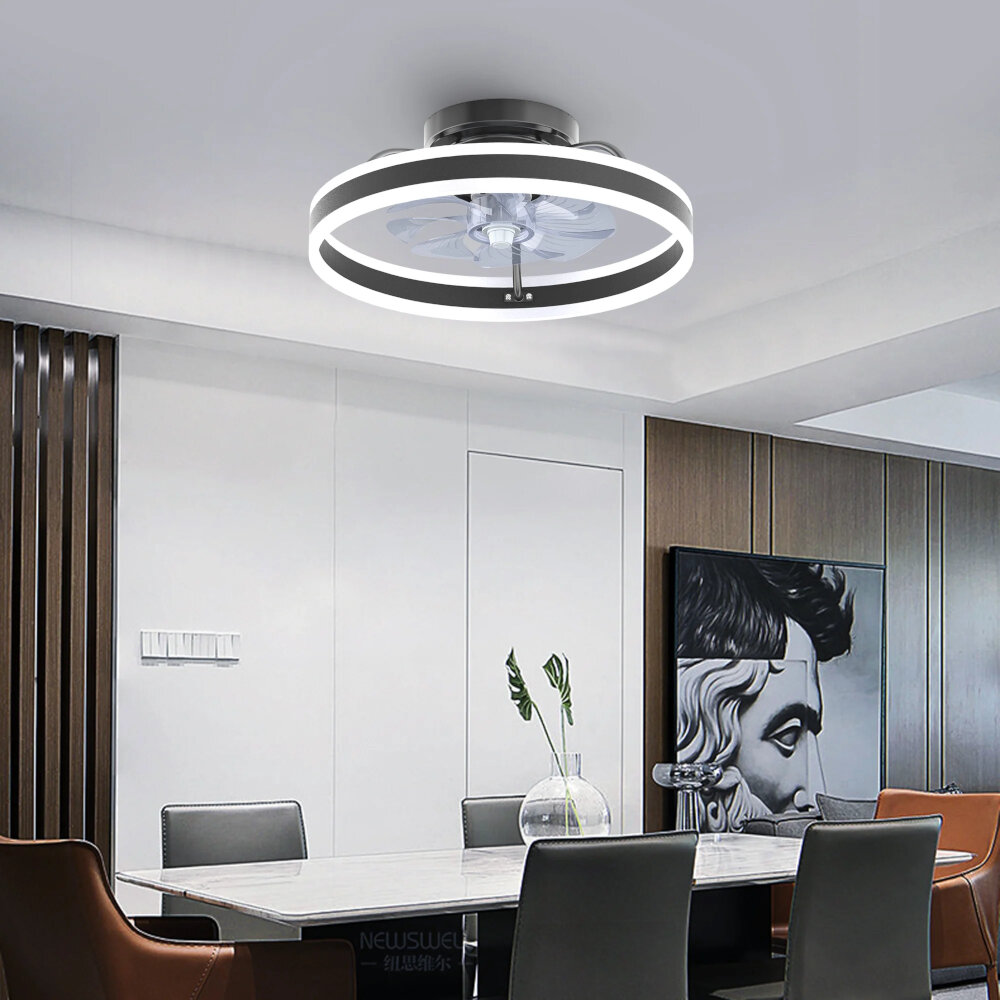
LED light strips are a popular choice for adding ambiance and visual appeal to any space. However, like any electronic device, they can encounter issues. The most common problems with LED light strips include flickering, dimming, color inconsistency, and not turning on at all. Fortunately, there are simple steps you can take to prevent these issues from occurring. One of the most important tips for preventing LED light strip issues is to choose high-quality products. Not all LED light strips are created equal, and opting for cheap, low-quality options can lead to a host of problems. Be sure to do your research and invest in products that are designed to last. Additionally, it’s important to follow the manufacturer’s instructions for installation and use. This includes ensuring that the power supply is the correct voltage for the strip and avoiding overloading the circuit. By taking these steps, you can avoid many of the common issues that plague LED light strips and enjoy a beautiful, well-functioning lighting setup.
Proper installation and handling of LED light strips is crucial for ensuring their optimal performance and longevity. Before installing them, it’s important to carefully read and follow the manufacturer’s instructions. Make sure the surface where the strip will be mounted is clean and dry to ensure good adhesion. Avoid bending or twisting the strip excessively, as this can damage the circuit board and cause the lights to malfunction. Additionally, avoid exposing the strip to moisture or extreme temperatures, as this can also cause damage. By taking these precautions and handling the strips with care, you can help ensure that they work properly and last for years to come.
Regular maintenance and cleaning is crucial when it comes to keeping your LED light strips working properly. Over time, dust and dirt can accumulate on the surface of the strips, which can obstruct the light output and cause flickering. Therefore, it’s important to wipe down the strips with a soft cloth and some rubbing alcohol every few weeks to keep them clean. Additionally, you should check the connections to ensure they are secure and free from any corrosion or damage. By performing these simple tasks, you can extend the lifespan of your LED light strips and ensure they continue to provide bright, vibrant illumination for years to come.
Choosing high-quality components is crucial to ensure the optimal performance of LED light strips. When selecting components, it is essential to consider the quality of the LED chips, resistors, and capacitors. Cheap components may fail prematurely and lead to issues such as flickering, dimming, or color shifting. It is also essential to choose the right components that match the voltage and current requirements of the LED strip. High-quality components may cost more initially, but they will provide longer-lasting and more reliable performance, reducing the need for frequent replacements and repairs. Therefore, investing in high-quality components is a wise choice to ensure the longevity and optimal performance of LED light strips.
When to Seek Professional Help

If you’ve tried all the troubleshooting tips for LED light strips mentioned in the article and they still don’t work, it may be time to seek professional help. While it can be tempting to try and fix the issue yourself, especially if you’re handy with electronics, there are some situations where it’s best to leave it to the experts. For example, if you suspect that the power supply or wiring is damaged, attempting to fix it yourself could be dangerous and may even cause further damage. In such cases, it’s best to contact a licensed electrician or a qualified LED light strip technician who can diagnose the issue and provide a safe and effective solution. Another reason to seek professional help is if you’ve exhausted all the DIY fixes and the LED light strips are still not working. This may be an indication of a more serious problem that requires specialized knowledge and equipment to fix. A professional can also help you determine if your LED light strips are compatible with your power source and provide recommendations on the best products to use for your specific needs. By seeking professional help, you can avoid the frustration of trying to fix the issue yourself and potentially causing more harm than good.
Sometimes, LED light strips may require complex or extensive repairs in order to properly function again. These repairs may involve soldering new components onto the circuit board, replacing damaged wiring, or even replacing the entire LED strip. It is important to approach these repairs with caution and a clear understanding of the problem at hand. Rushing into complex repairs without proper knowledge or experience can lead to further damage or even render the LED strip irreparable. In these cases, it may be best to seek the help of a professional or to consider purchasing a new LED light strip.
One of the most frustrating problems that can occur when working with LED light strips is the uncertain diagnosis of the issue. This can happen when the lights suddenly stop working, or when they don’t light up at all. There are a number of potential causes for this problem, ranging from issues with the power supply to problems with the wiring. In some cases, the issue may be related to a faulty LED strip itself, which can be difficult to identify without the right tools and expertise. Regardless of the cause, it’s important to take a methodical and patient approach to troubleshooting the problem, in order to identify the root cause and find the most effective solution.
When it comes to LED light strips, safety should always be a top concern. Faulty wiring, overheating, and other issues can lead to electric shocks, fires, or other hazards. That’s why it’s important to take the time to properly install and maintain your LED light strips. Be sure to follow the manufacturer’s instructions carefully and check for any signs of wear or damage on a regular basis. If you do encounter any problems with your LED light strips, it’s important to address them promptly to ensure the safety of yourself and those around you. By being vigilant and proactive, you can enjoy the many benefits of LED lighting without putting yourself or others at risk.
LED light strips can be a convenient and stylish way to add lighting to your home, but sometimes they can stop working properly. There are several common issues that can cause LED light strips to malfunction, such as loose connections, faulty power adapters, or damaged LED chips. To fix these issues, you can start by checking all the connections, making sure they are secure and properly connected. If the power adapter is faulty, replace it with a new one that matches the wattage and voltage requirements of your LED light strip. In the case of damaged LED chips, you may need to replace the entire strip. It’s important to troubleshoot and address these issues promptly to ensure your LED light strips continue to function properly and provide the desired lighting effect.
As we delve into the reasons why LED light strips may not be working, it is important to remember the preventative measures that can be taken to avoid encountering such issues in the first place. First and foremost, it is crucial to ensure that the LED light strip is properly installed and connected, as loose connections can lead to poor performance or complete malfunction. Additionally, the LED light strip should be kept away from water and moisture, as these elements can cause damage to the circuitry. It is also essential to use the appropriate power source for the LED light strip, as using an incorrect voltage can cause irreparable harm. By taking these preventative measures, we can avoid the frustration of dealing with non-functioning LED light strips altogether.
If you’ve tried everything and your LED light strips still aren’t working, don’t hesitate to seek professional help. It’s understandable to want to save money and troubleshoot the issue on your own, but sometimes the problem is more complex than it seems. A professional electrician or lighting technician will have the knowledge and tools to diagnose the issue and provide a solution that will work long-term. It’s important to prioritize your safety and the safety of your home or business, so don’t be afraid to reach out for help. With the right professional assistance, you can have your LED light strips up and running in no time.
Conclusion
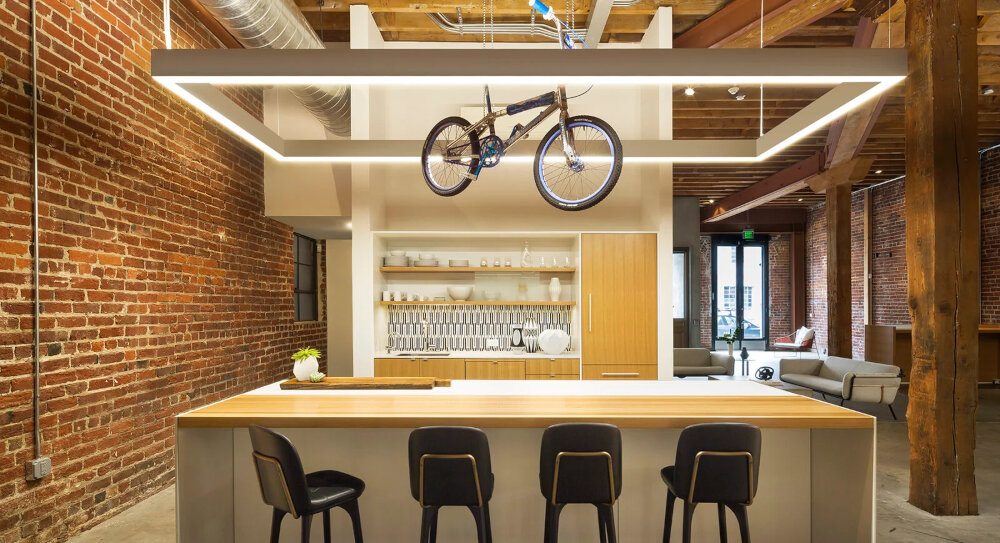
In conclusion, LED light strips are a great way to enhance the ambiance of your home or office, but they can be frustrating when they stop working. However, armed with the knowledge of why they may not be working and the ways to fix them, you can easily troubleshoot and get them up and running again. Whether it’s a power issue, faulty wiring, or a damaged component, there are simple steps you can take to diagnose and resolve the problem. So don’t give up on your LED light strips just yet – with a little patience and effort, you can enjoy their bright and colorful glow once again.

